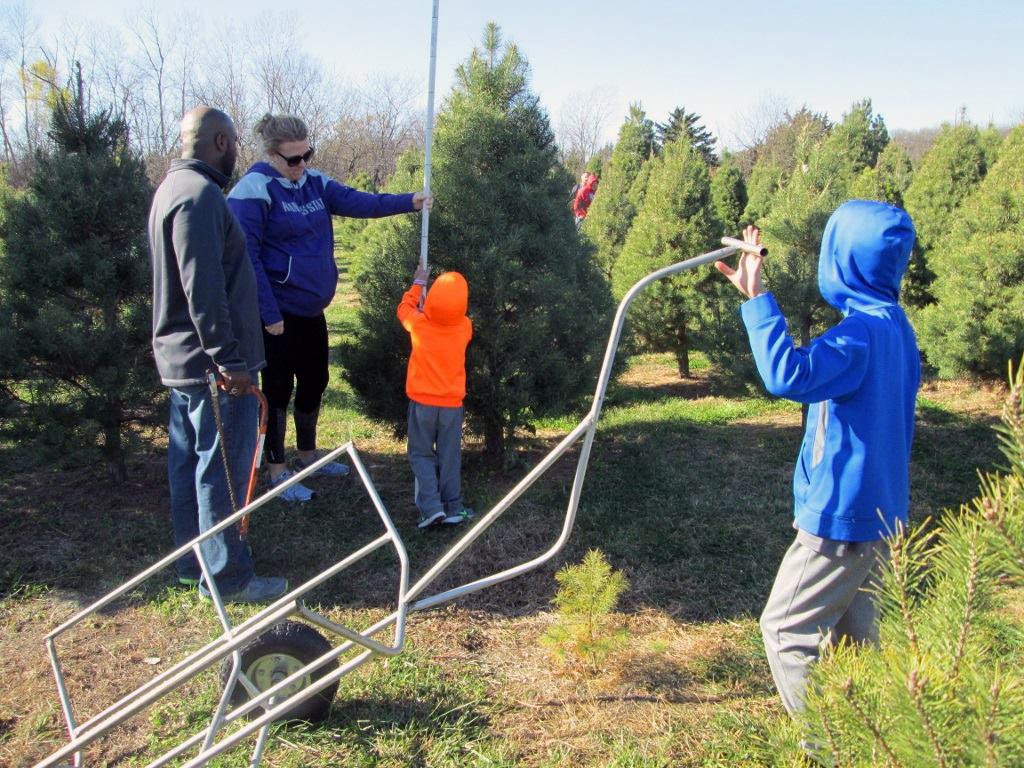A little care and some water will keep it fresh
 For some folks, it’s just not Christmas without a fresh-cut Christmas tree in the house, giving off a fragrance that a pine-scented candle just can’t … hold a candle to. Even if you own a well-made, pre-lit artificial tree, this might just be the year for something different.
For some folks, it’s just not Christmas without a fresh-cut Christmas tree in the house, giving off a fragrance that a pine-scented candle just can’t … hold a candle to. Even if you own a well-made, pre-lit artificial tree, this might just be the year for something different.
“I think the appearance and aroma of a real Christmas tree makes the holiday season complete,” said K-State Research and Extension forester Charles Barden. “Here in Kansas, Christmas tree growers are located throughout the state. It can be a fun family activity to visit your local Christmas tree farm this holiday season to choose and cut your very own special tree. Many farms also offer hay rides and other activities on the weekends between Thanksgiving and Christmas.”
While a locally-grown fresh-cut tree is an option, it’s probably more common to find fresh-cut trees at temporary Christmas tree lots, as well as at grocery stores, nurseries and other retailers. Barden said when you’ve chosen a tree, you’ll want to take it for a quick test drive.
- The needles on a fresh tree should be green and flexible — if you bend a few needles they should straighten back out. The needles should not stay bent or break.
- Pick up the whole tree and drop it just a few inches, let the stump hit the ground. If only a few yellow needles fall out, that’s OK. If a lot of olive-green needles fall out, you should probably move on.
- When you lift up the tree, does it seem heavy for its size? “That indicates a high moisture content, that the tree is holding water,” Barden said. A heavy tree is a moist tree, and that’s a good thing.
When you get the tree home, whether it was purchased at a local farm or as a pre-cut tree, Barden advises sawing off the bottom inch or two of the stump. “This helps reopen any pitch-clogged pores, so the tree can more easily absorb water.” Place the tree in a tree stand or bucket, and add at least a gallon of fresh water. Barden cautions that the first 24 hours, a newly installed fresh tree can draw up as much as a gallon of water. “Be ready to add water to the stand or bucket,” he said. “After that, a fresh tree will ‘drink’ about a quart a day.”
Barden said the “Christmas tree solutions” that are sold really don’t provide any benefits. “Some people recommend placing a penny or an aspirin in the water to reduce mold growth, but this does not really seem to benefit the tree,” he said. “Just use fresh, clean water.
“Also, place the tree away from radiators or heat vents that might cause the tree to dry out prematurely.”
In good conditions, Barden said, a fresh-cut tree can stay fresh for two weeks, maybe even three. “That’s why I kind of cringe a little bit when I see the trees come out on Thanksgiving,” he added, “because by New Year’s Eve, even the best trees will be losing a lot of needles.”
When you’re done with your tree, there are better places for it than the local landfill, Barden said.
Go fish — Some parks will weigh down old Christmas trees and sink them into ponds and lakes, to become fish habitats.
Spread it around — Larger cities will have an organized collection day, or a collection location for old trees. The trees are then ground up and used for mulch. Alternatively, you can strip off and cut some of the smaller branches for your own flowerbeds and shrubs.
One for the birds — “Some people like to put them out in the backyard and put bird food on or around them to give the little bit of cover and shelter for their feathered friends,” Barden said.
One end-of-Christmas “tradition” that Barden strongly discourages is using the trunk of the tree and/or larger branches in the fireplace. “Some people feel that burning a Christmas tree in their fireplace is a good way to get a little extra excitement. These trees have a lot of pitch pockets in them and they can throw sparks like firecrackers across your living room. But ‘Christmas tree firewood’ is not something we want to do,” Barden said.
Source: KSU Extension



Leave A Comment